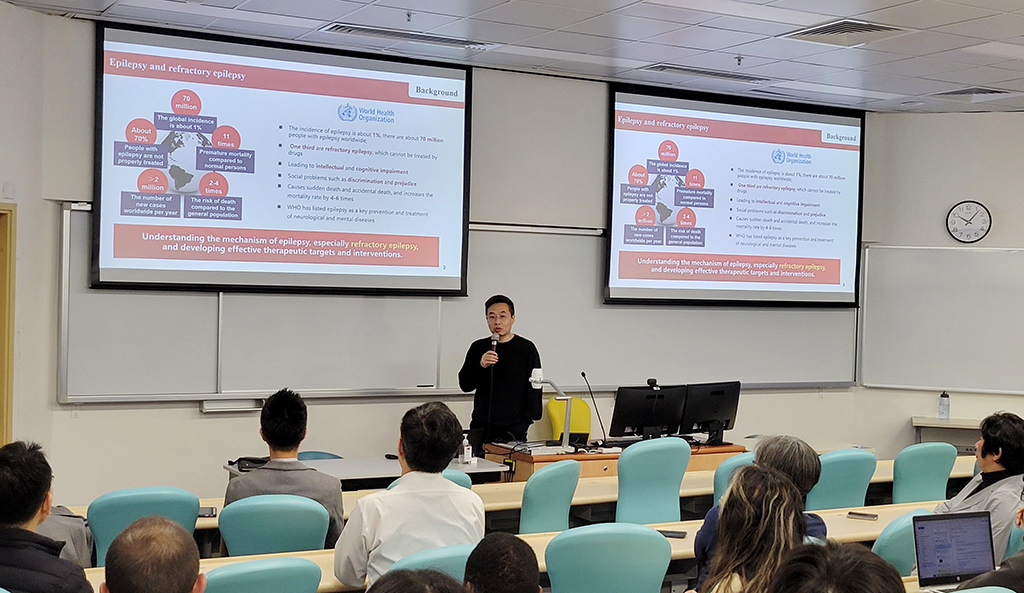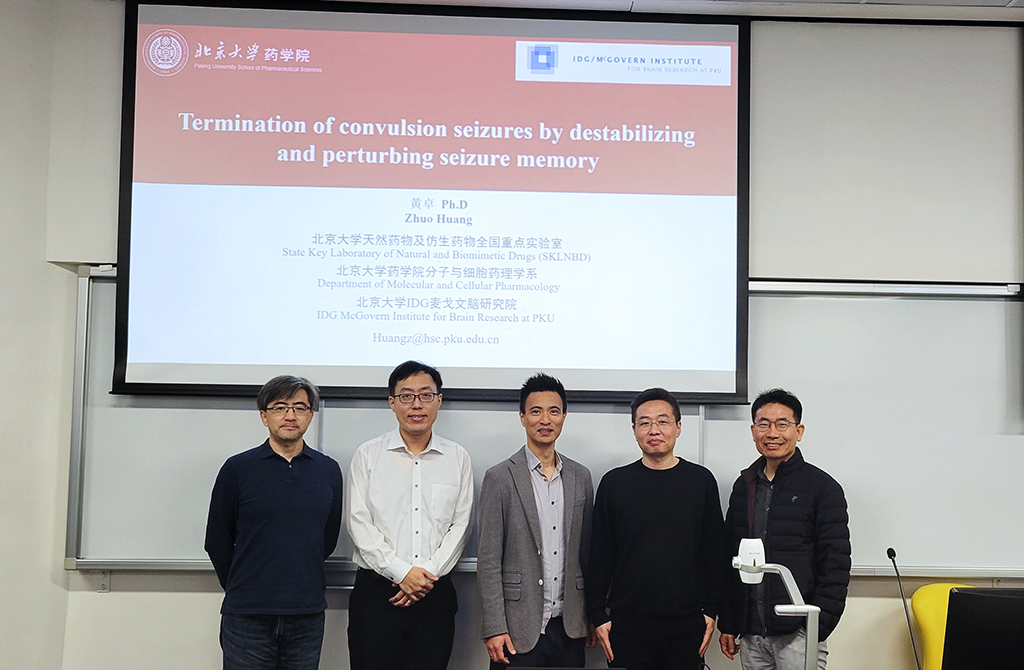


Professor Zhuo HUANG from the Department of Pharmacology, School of Pharmaceutical Sciences in Peking University delivered a talk entitled “Termination of Convulsion Seizures by Destabilizing and Perturbing Seizure Memory Engrams”. Prof. Huang received his PhD from the UCL (University College London) in the UK in 2008 working on the function of NR1-NR2B-NR2D triheteromeric NMDA receptors in Parkinson's diseases with Prof. Alasdair Gibb. From 2008 to 2013 at the School of Pharmacy of UCL, he worked on the function of dendritic HCN1 channels in epilepsy with Prof. Mala Shah. In 2013, he joined Peking University and started his own lab. His main research interests are in the discovery of ion channel targets and intervention strategies for major brain diseases, such as epilepsy and major depression diseases.
Prof. Huang presented his group’s published and on-going work on epilepsy. Epilepsy is a severe brain disease that affects 1% of global population and one third of them are resistant to current anti-epileptic drug (AED) treatment. Epileptic seizure is generally linked to imbalances between excitation and inhibition, often involving hyperexcitability. Maladaptive neural plasticity plays a major role in the development of hyperexcitability. In his seminar, Prof. Huang presented their work on several molecular targets they found in different neuronal compartments, including the Chromodomain Y-line (CDYL) protein in neuronal somata and KCNT1-Nav1.6 complexes in the axon initial segment. Specifically, knockdown of the epigenetic factor CDYL in hippocampal neurons resulted in augmented Nav1.6 currents, lower neuronal excitability threshold, and increased seizure susceptibility. On the other hand, transgenic mice over-expressing CDYL exhibited higher neuronal excitability threshold and were less prone to epileptogenesis. In addition, his team identified the interaction between KCNT1 potassium channel and Nav1.6 sodium channel as a novel mechanism of action for the first line AED, quinidine. Finally, Prof. Huang introduced their recent work on seizure engram cells. Epileptogenesis, characterized by changes in synaptic strength between neurons, shares similarities with memory formation. However, there is limited direct evidence supporting the existence of seizure memories. Prof. Huang and his team have developed a novel conditioned seizure memory (CSM) paradigm, which allows for the triggering of repetitive seizures by environmental cues. By activating cue-responsive engram cells, they were able to induce CSM. Additionally, the exposure to cues initiated a process of memory reconsolidation driven by mTOR-BDNF signaling. Through pharmacological targeting of the mTOR pathway within a specific time window, the team observed a reduction in seizures in animals and interictal epileptiform discharges in patients with refractory seizures. This work established a causal link between seizure memory engrams and seizure occurrence. Prof. Huang’s extensive work provide valuable insights into epileptogenesis and offer a promising new direction for the treatment of epilepsy.